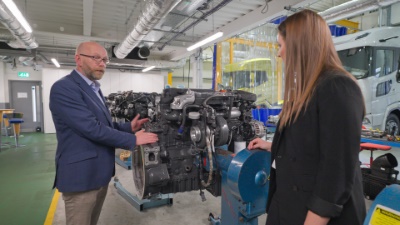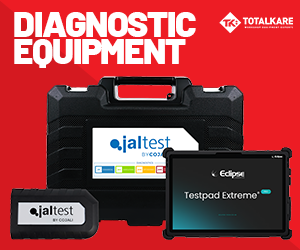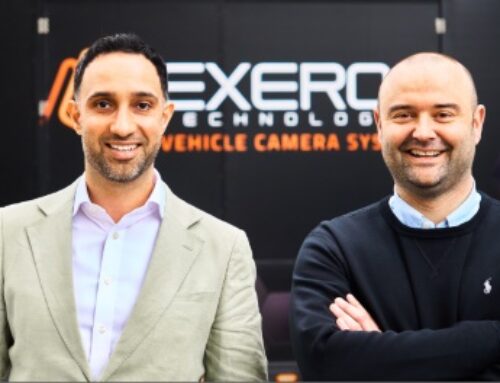Breaking down the barriers to HVO
Millie Jones of Certas Energy and Phil Moon from DAF Trucks offer their perspective on why everyone should be talking about HVO
DAF and Certas Energy have joined forces to debunk persistent myths around HVO – myths that mean fleet operators are missing out on a key tool for instant emissions reductions.
HVO, or hydrotreated vegetable oil, is a widely available drop-in alternative to traditional diesel.
It can slash greenhouse gas emissions from a vehicle by as much as 90 per cent compared to standard diesel, and is fully compatible with the majority of diesel engines. Despite this, fleet operators and drivers are not embracing the fuel as enthusiastically as they could.
DAF’s Phil Moon joined Certas Energy’s Millie Jones on a new HVO podcast to explore why this is and to address misconceptions around the fuel head on, from the perspective of one of Europe’s largest truck manufacturers.
Why use HVO?
Millie says: “HVO is a newer fuel to the industry which leads to many misconceptions. But fleet operators who dismiss HVO because of unfounded concerns miss out on the fastest, easiest way of lowering fleet emissions.
“HVO is a lower carbon alternative diesel which offers immediate greenhouse gas emissions savings of up to 90 per cent compared to standard diesel across the product life cycle.
“It also burns cleaner, emitting fewer particulates compared to conventional diesel. In addition, storage is simpler because HVO has a shelf life of up to 10 years, and is biodegradable and non-toxic.
“We deliver HVO to businesses nationwide, and fleets can also fill up on HVO at selected bunker sites. We are also the first UK distributor to offer HVO to HGV fuel card users at the pump.
“In fact, the use of HVO for our own fleet has delivered savings of 6,433 tonnes of CO2e over two years – so it’s a no brainer for operators looking to reduce their emissions.”
Phil added: “When we first started talking about HVO six years ago, people couldn’t believe there was such a readily available alternative to diesel.
“The conversation has shifted now, people are aware of it, they’ve read about it in the press or know someone using it, but they haven’t dug deeply enough into the differences.
“Everyone looks at the cost premium, but as far as we’re concerned, there are countless benefits that go a long way to mitigate this.”
DAF seal of approval
DAF has used a bulk supply of HVO from GBF, owned by Certas Energy to fuel its press and demonstration fleet and its showtrekker outside exhibition unit.
In addition to greener emissions, Phil added that HVO can improve the operational life of the engine.
He said: “From our experience at DAF, running on HVO is very easy to use.
“HVO burns cleaner, so it doesn’t generate as much soot, helping keep particulate filters clear, improving the operational life of equipment as well as saving fuel. There is also less oxygen in the fuel than conventional diesel which leads to lower NOX emissions from the combustion process.
“Compared to diesel it doesn’t smell – you don’t go around smelling of diesel all the time, and that’s got to be a good thing for everyone!” he added.
An easy switch
While the cost of HVO will continue to be a topic of conversation, Phil says there’s value in taking the small economical hit to retain and attract new business.
He said: “Not only are you going to be more attractive to those customers who are looking for hauliers to provide lower emission transport solutions, but you can provide them with a more economical option than converting their own trucks to electric.
“The environmental benefits might not be directly felt by them, but it could be significant for their customers. High street brands are demanding that their supply chains are green. They might not be able to go out and buy an electric truck, but they can use HVO, and that’s where operators can really get moving.”
Try before you buy
Phil said: “The beauty about HVO is that it’s a diesel drop-in replacement, so you can switch between the two. If, for whatever reason, you decide it’s not for you, you can simply stop using it. You can use it one week and not the next, it makes no difference.”
Millie added that Certas Energy’s HVO fleet balancing calculator allows fleet operators to calculate the cost of mixing HVO with traditional diesel to aid decarbonisation before making the switch.
She said: “HVO is more expensive per litre than conventional diesel, making it more practical for some operators to blend HVO with diesel, or only use HVO in some situations. For example, an operator could commit to one tank of HVO a month, or use HVO in congested areas to reduce local air pollution.
“This is where our automated HVO fleet balancing calculator comes in. It is a free online tool that will provide the average fuel cost when including HVO as part of the fuel mix, helping operators make decisions about how and when to drop in the renewable alternative diesel.”
Millie and Phil’s dedicated podcast, ‘HVO on the Road’, is the industry’s first podcast dedicated entirely to HVO. It can be streamed for free on Spotify.














